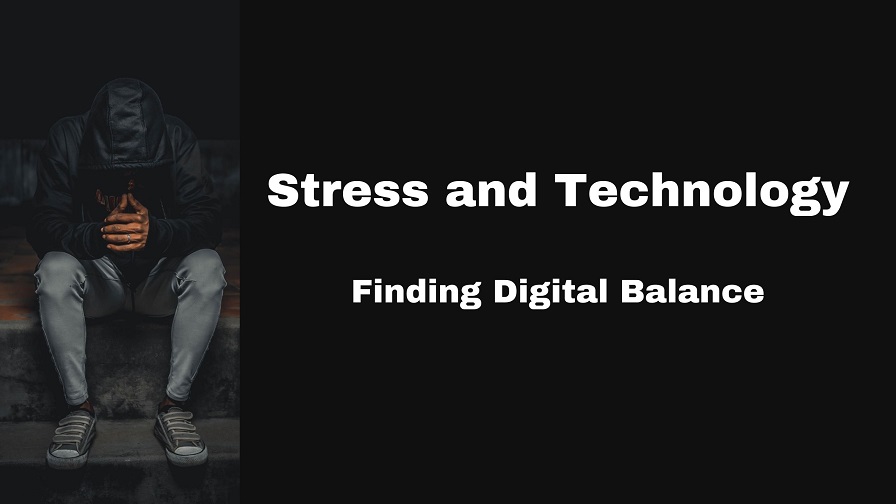Stress and Technology: Finding Digital Balance
In our rapidly evolving digital age, technology has become an integral part of our lives, offering convenience, connectivity, and information at our fingertips.
However, the constant use of technology can also contribute to stress and overwhelming feelings. Striking a balance between reaping the benefits of technology and managing its potential negative impact is crucial for maintaining our mental & emotional well-being.
This article delves into the relationship between stress and technology, providing insights and practical strategies for finding digital balance in a tech-savvy world.
The Digital Stress Connection
Technology’s influence on stress can manifest in various ways:
Information Overload: Constant exposure to news, emails, and notifications can lead to information overload, contributing to anxiety and stress.
Digital Distractions: Multitasking between devices and apps can hinder productivity, increase stress, and disrupt focus.
Social Comparison: Social media platforms can promote feelings of inadequacy and stress due to constant comparison.
Sleep Disruption: The blue light emitted by the screens can disrupt sleep patterns, and leading to fatigue and increased stress.
Reduced Face-to-Face Interaction: Excessive technology use can lead to reduced in-person interactions, vital for emotional well-being.
Strategies for Finding Digital Balance
Set Boundaries
Establish boundaries for technology use in terms of duration and specific times. Create tech-free zones, such as during meals or before bedtime.
Practice Mindful Technology Use
Be mindful of your technology use. Please consider how it makes you feel and adjust your habits accordingly. Practice digital detoxes periodically.
Prioritize Face-to-Face Interaction
Make time for in-person interactions with family and friends. Meaningful connections enhance well-being and provide a break from digital screens.
Limit Notifications
Turn off non-essential notifications to reduce constant interruptions and regain control over your attention.
Practice Digital Sabbaticals
Occasionally, disconnect from all digital devices for a day or even a weekend. Use this time to engage in offline activities and recharge.
Set Tech-Free Times
Designate specific times each day when you refrain from using technology, allowing you to focus on other activities and reduce stress.
Practice Time Management
Utilize technology to enhance your time management skills. Use apps and tools that help you prioritize tasks and maintain a balanced schedule.
Cultivate Offline Hobbies
Engage in hobbies that don’t involve technology, such as reading physical books, gardening, painting, or playing musical instruments.
Mindful Social Media Use
Practice mindful scrolling on social media platforms. Curate your feed to include positive and inspiring content, and limit your time on these platforms.
Digital Well-Being Tools
Many smartphones now offer digital well-being features that track your usage and allow you to limit app usage.
Conclusion
Technology can be a powerful tool, but managing its impact on stress and well-being requires conscious effort.
By finding digital balance and setting boundaries, you can harness the benefits of technology without succumbing to its negative effects.
Remember that mindfulness is knowing how technology affects you and making intentional choices that prioritize your mental and emotional health.
Striking a balance between technology and the real world allows you to navigate the digital landscape with greater peace, focus, and overall well-being.
Thanks for visiting How To Cure Stress

